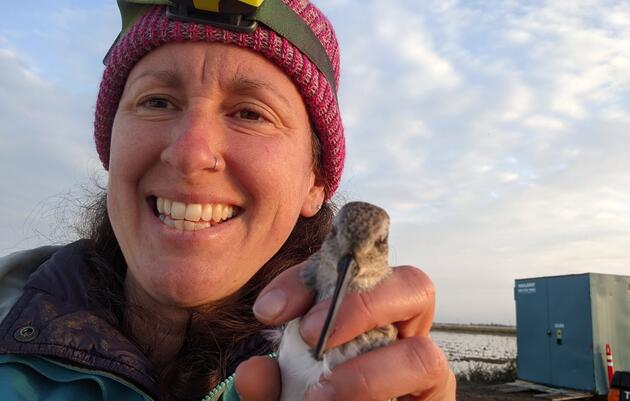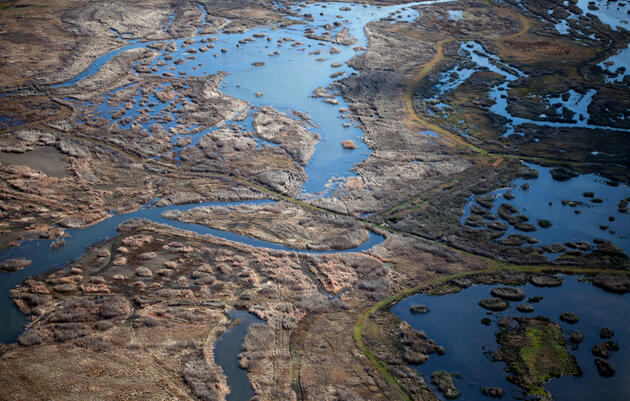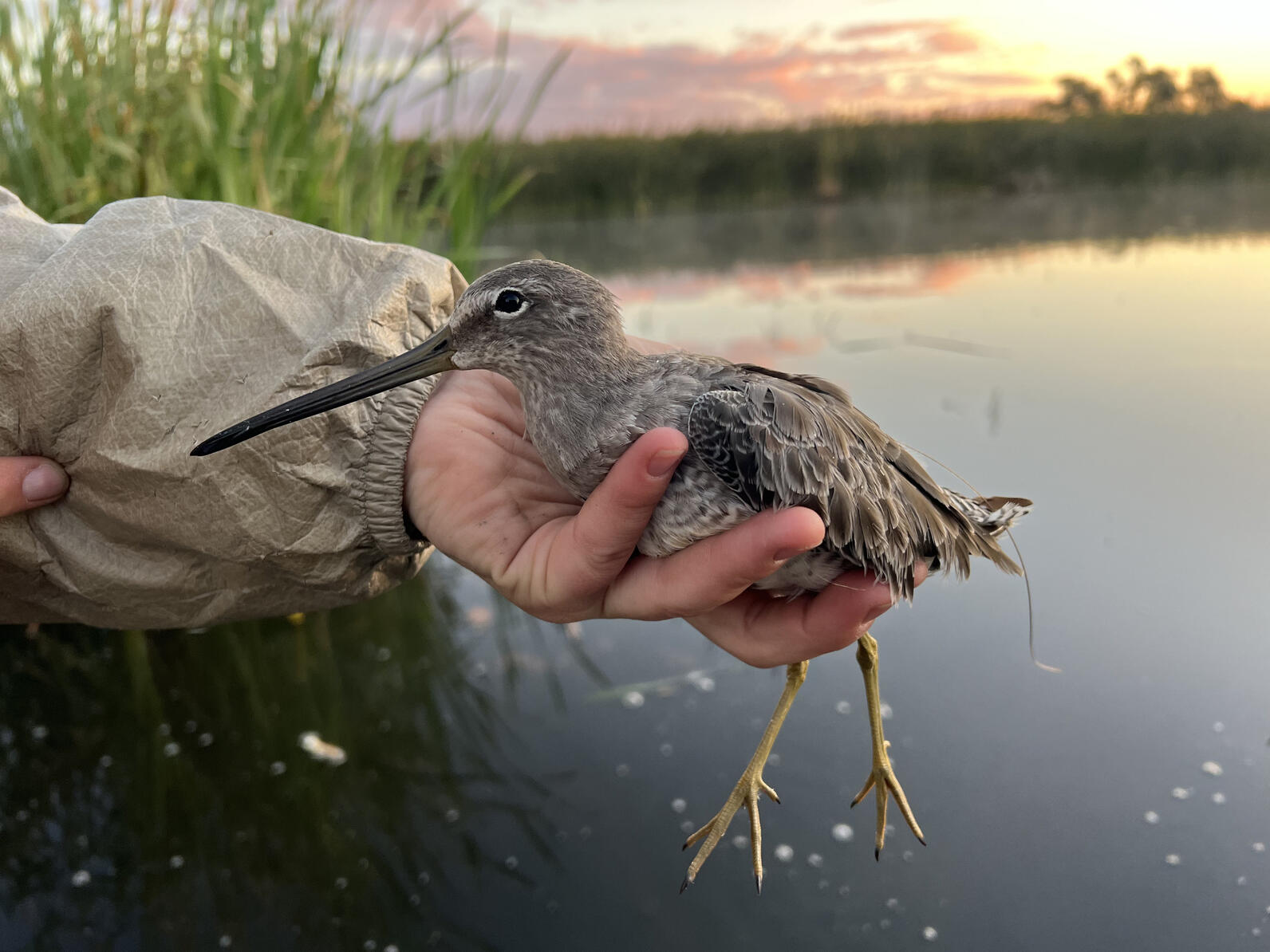
In September, Audubon California partner, Point Blue Conservation Science, led a research initiative in the Lower Klamath National Wildlife Refuge as part of the Migratory Bird Conservation Partnership's work. The objective was to deploy 30 miniature Argos satellite tags on Long-billed Dowitchers. This effort contributes to ongoing research aiming to enhance our understanding of how drought impacts the movement and physiology of migratory shorebirds—complementing the broader conservation work in California’s Central Valley.
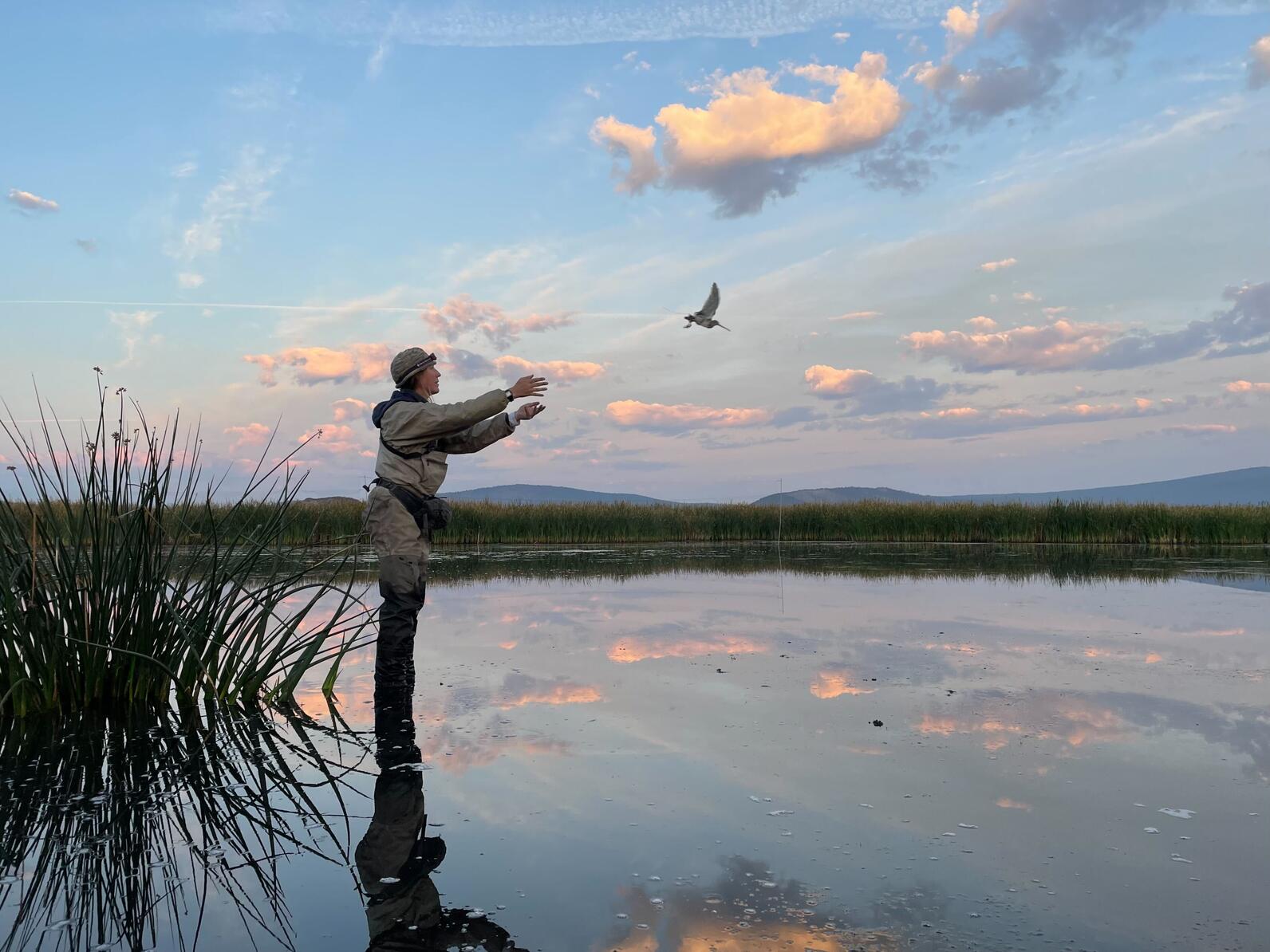
With the notion that, amid drought-induced habitat scarcity, shorebirds undergo heightened stress and a decline in overall health, the study delves into how these birds navigate dynamic drought and habitat scenarios. Conversely, in the presence of more habitat, the birds should be in better shape. Researchers anticipate that during dry years, shorebirds that typically overwinter in the Central Valley may exhibit a preference for coastal areas. This shift in preference could be rooted in the stability of wintering coastal habitats, which tend to remain relatively unaffected as overwintering shorebird habitats, even in the face of severe drought conditions.
To gauge how shorebirds respond to their environment and to track their movements, researchers capture a variety of shorebird species, including Dunlin, Least Sandpipers, and Long-billed Dowitchers in the Central Valley. They conduct body condition analyses to evaluate factors like body fat and weight. Blood samples are collected to analyze stress levels, metabolic factors, triglycerides, and hormone levels. The comprehensive analysis of blood is led by Oregon State University, offering valuable insights into the overall health and condition of the birds.
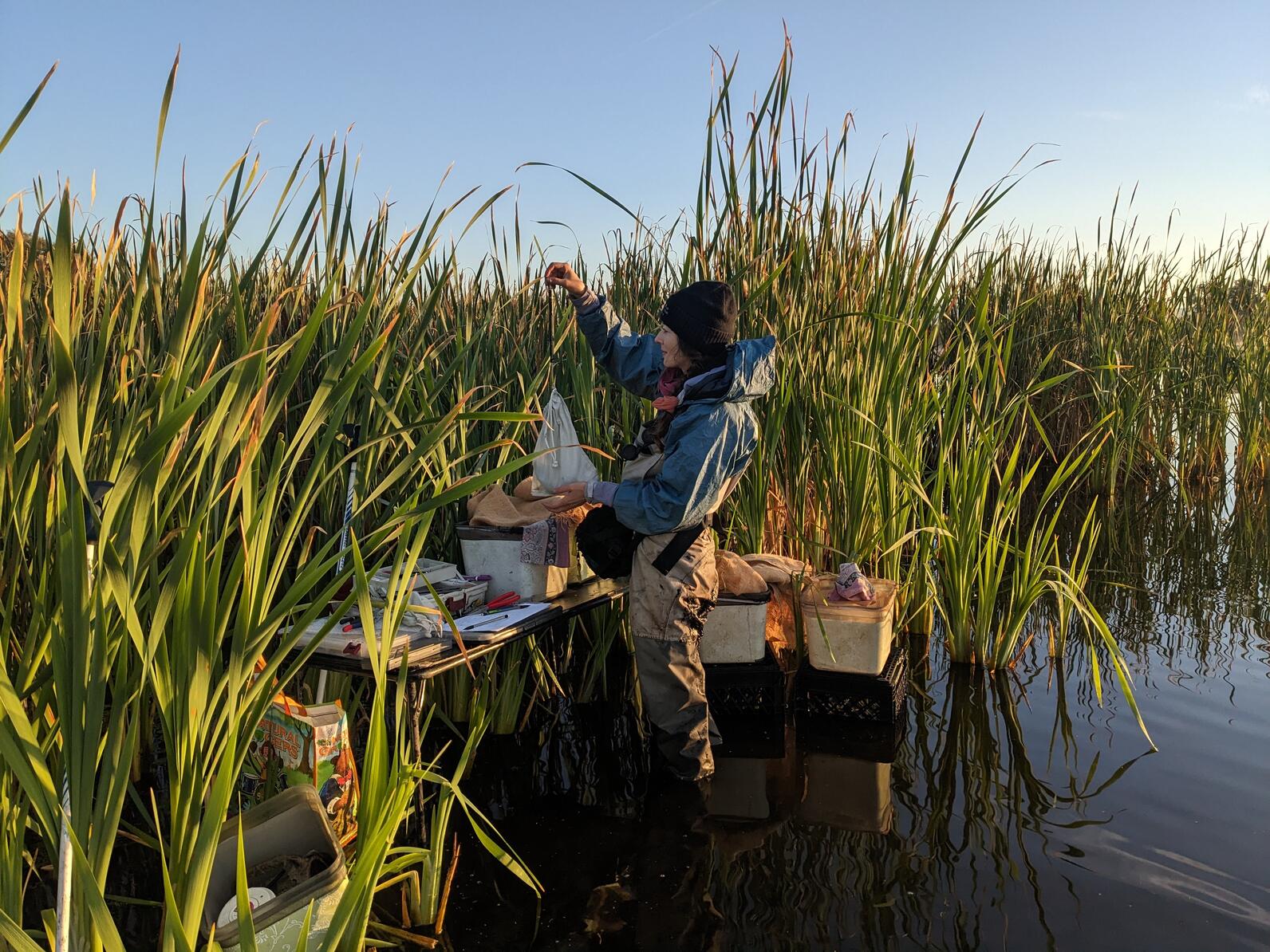
The introduction of Argos satellite tags for Long-billed Dowitchers in the Klamath Basin builds upon ongoing efforts that utilize Motus tags, enhancing our understanding of how overwintering shorebirds utilize the landscape-level habitat in California's Central Valley during drought. Before incorporating Argos tags, researchers had already employed Motus tags to support the project. This marks the initial use of tags in the Klamath Basin, recognizing its significance as a critical stopover site for migratory birds.
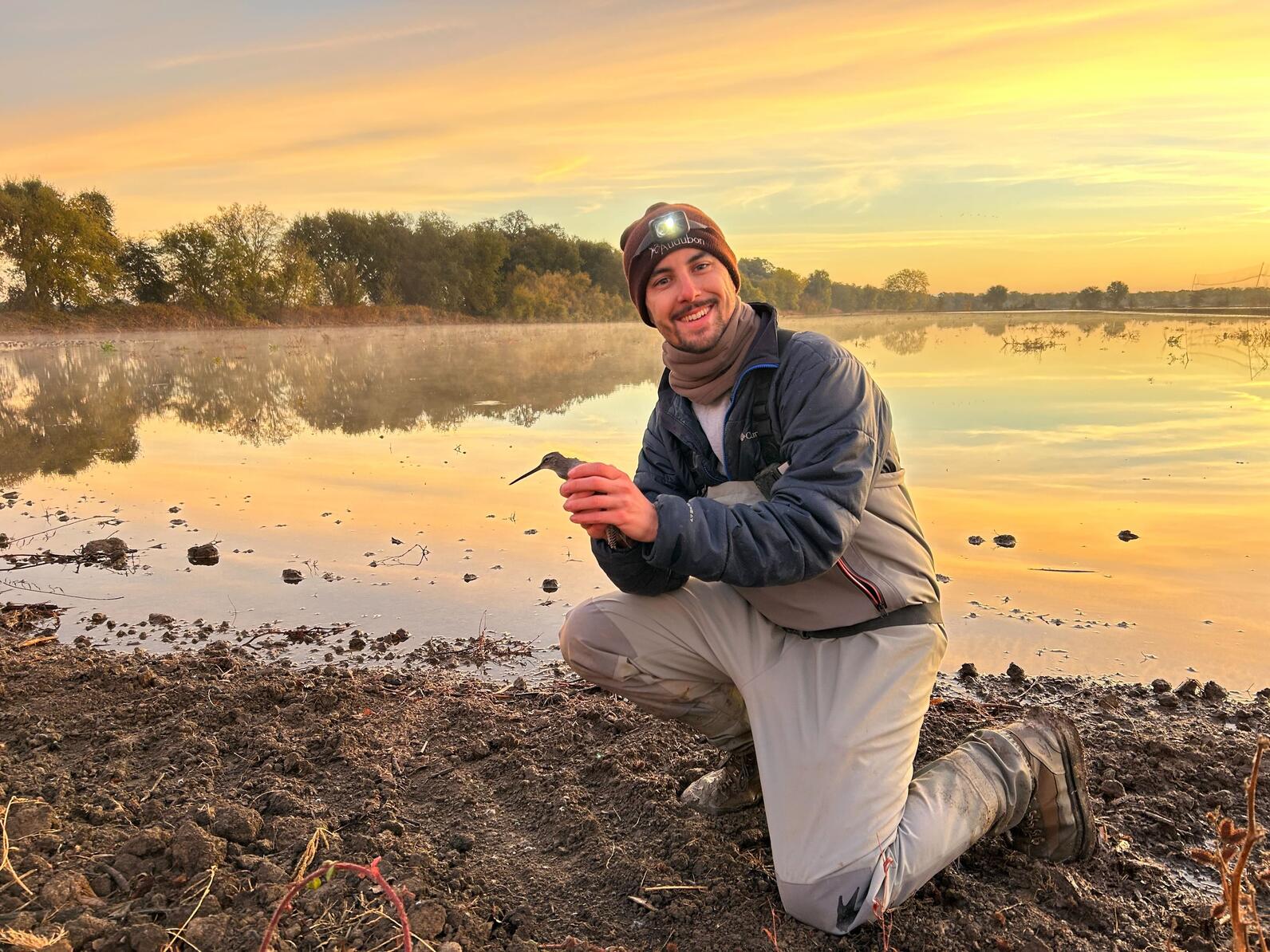
Why opt for Argos Satellite trackers for Long-billed Dowitchers and not Dunlin or Least Sandpipers? Smaller-bodied Sandpipers, such as Least Sandpipers and Dunlin, are equipped with lighter Motus trackers to ensure that the tags don't exceed 3% of a bird's body weight. On average, larger-bodied birds like Long-billed Dowitchers can comfortably bear the weight of the heavier Argos satellite tags.
As of November 15, 2023, 30 satellite-tagged Long-billed Dowitchers have been detected. Notably, 25 of these birds were tracked this month, with 5 recent detections from birds tagged at the Klamath Basin. Two of the Klamath Basin birds were last detected in October 2023.
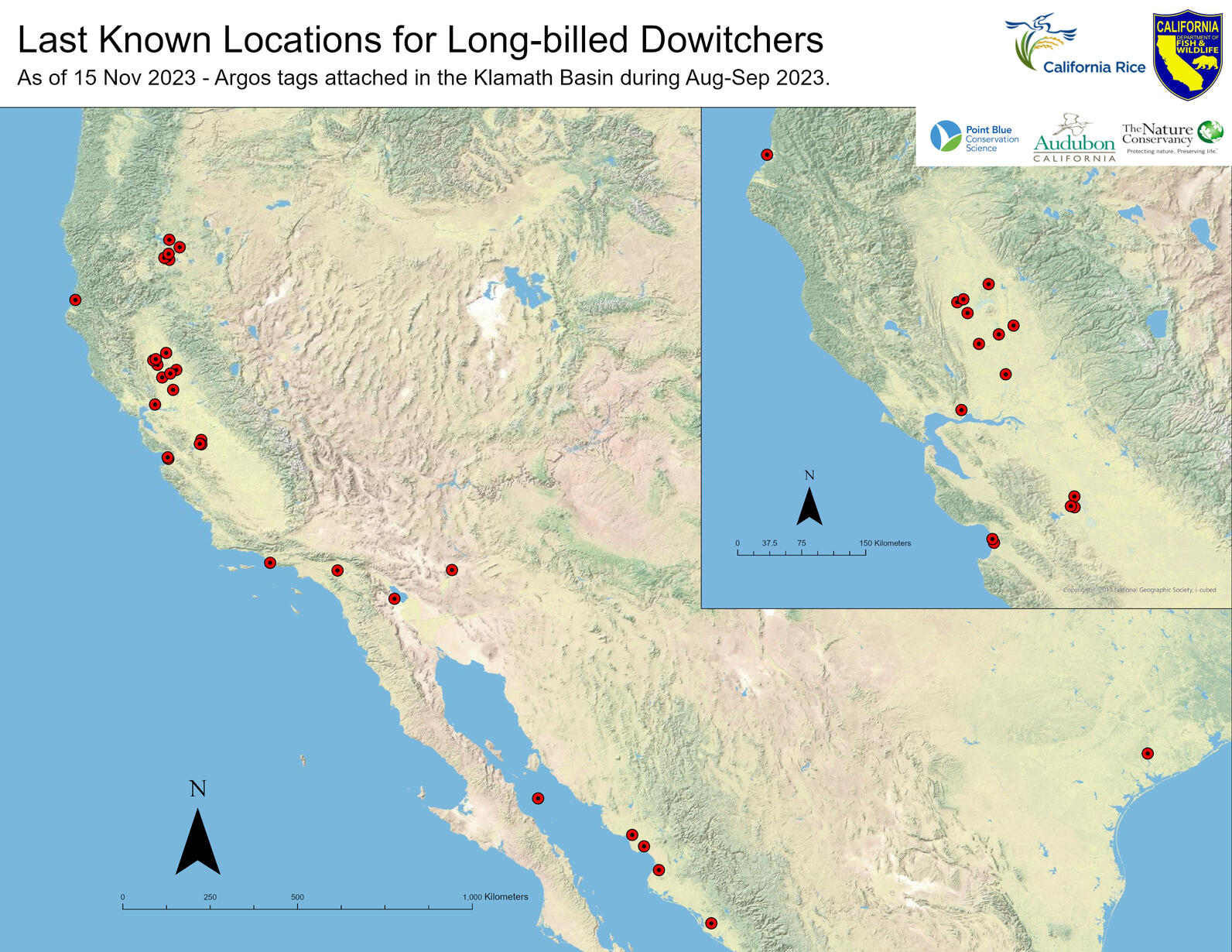
Acknowledgements: The Migratory Bird Conservation Partnership comprises The Nature Conservancy, Audubon California, and Point Blue Conservation Science. Critical funding for this innovative project is provided by the California Department of Fish and Wildlife. The California Department of Water Resources purchased 25 of the Long-billed Dowitcher transmitters, and provides funding for the project.
Additionally, the California Rice Commission is a long-time collaborator and partner of the Migratory Bird Conservation Partnership.
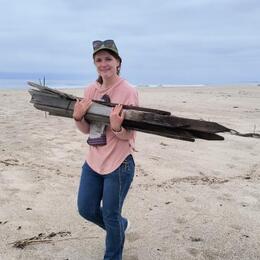
By Alecia Smith
Monthly Giving
Our monthly giving program offers the peace of mind that you’re doing your part every day.


